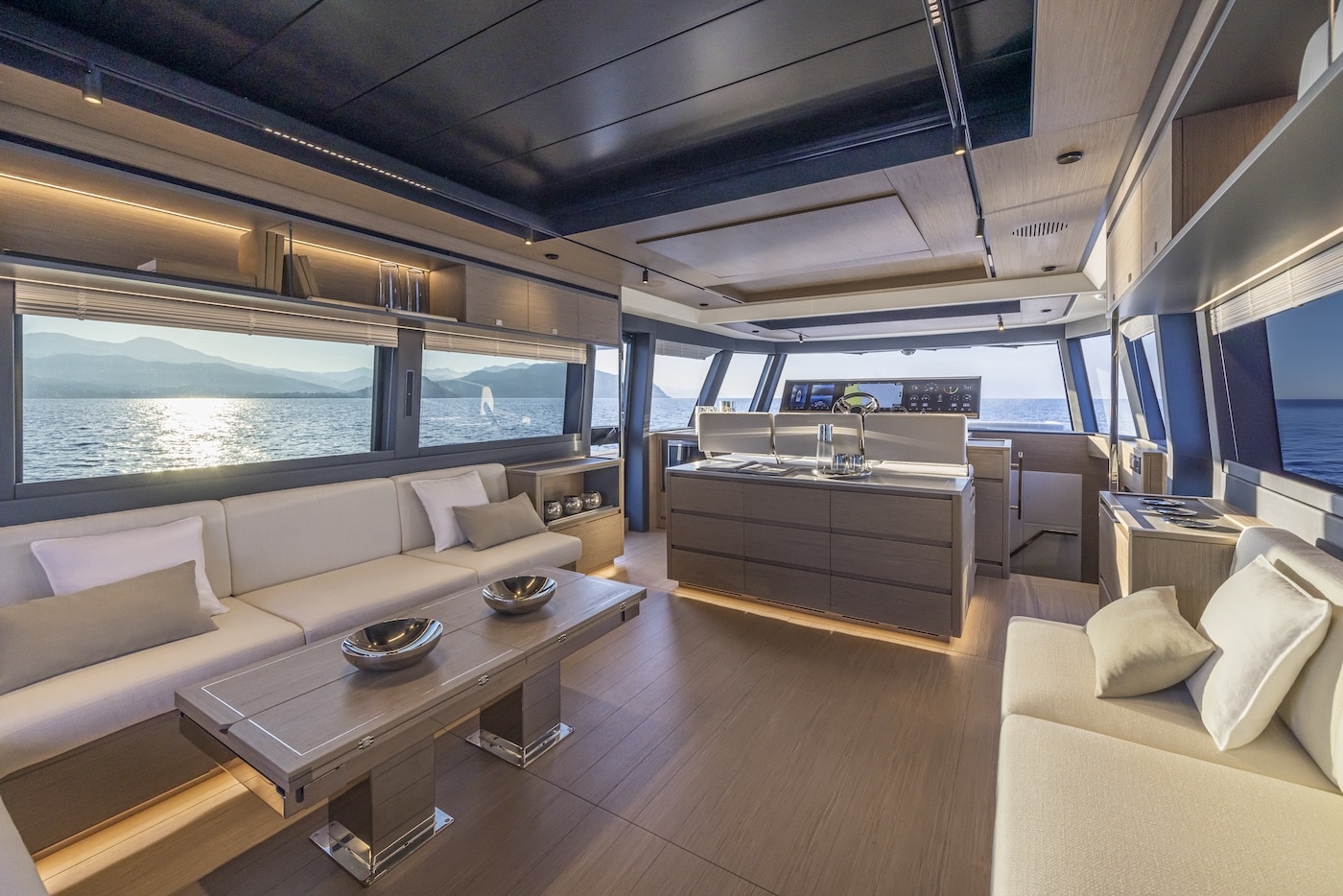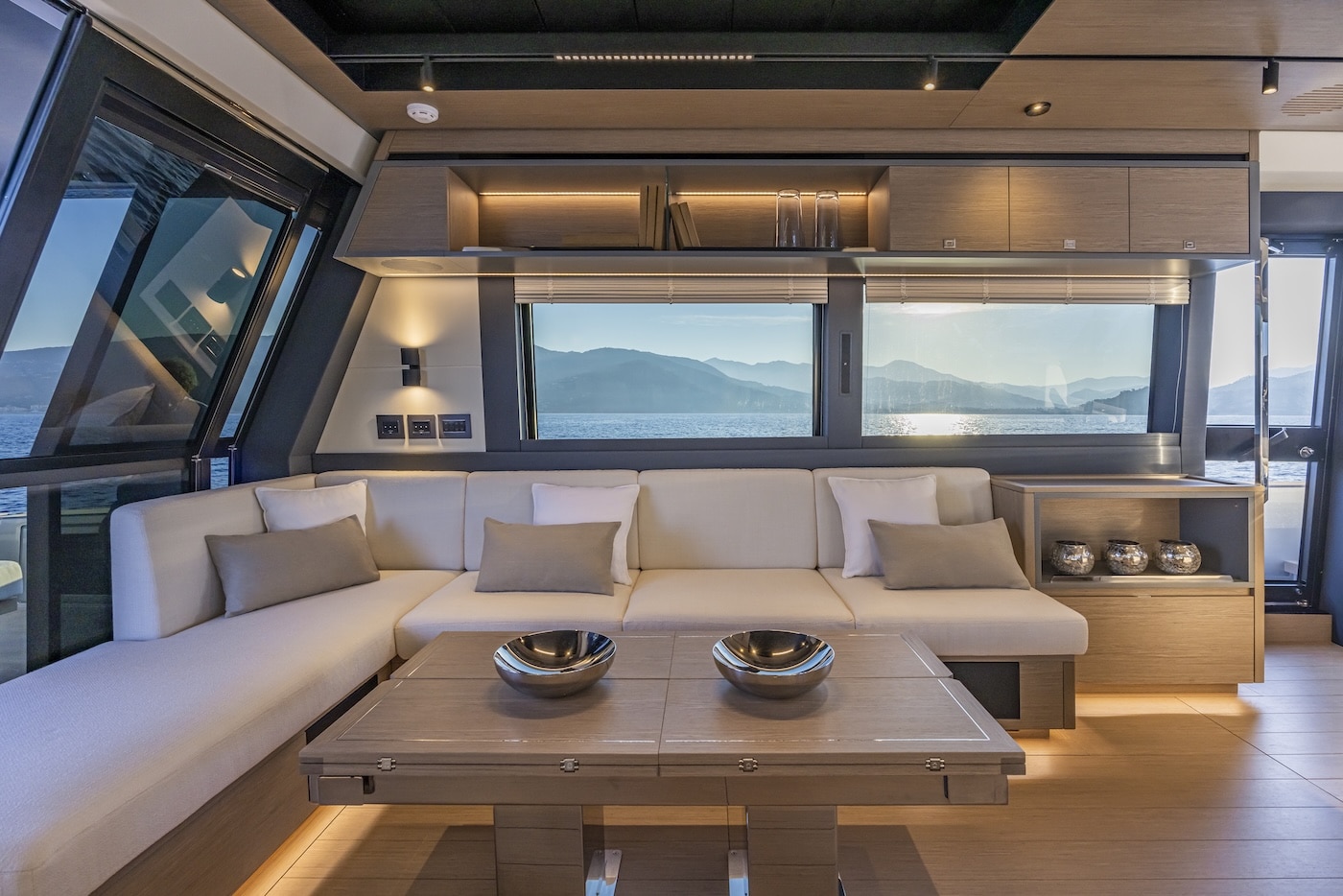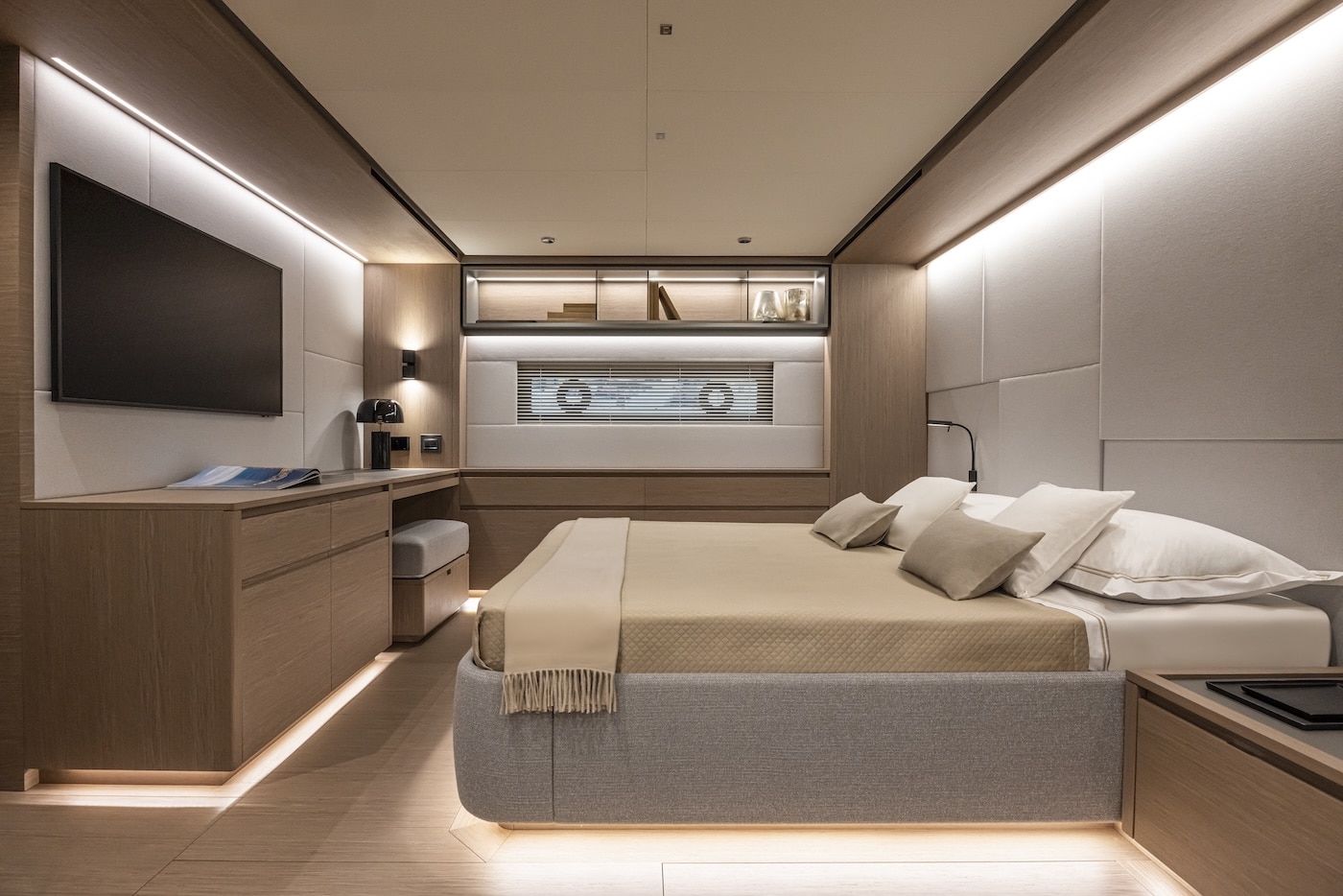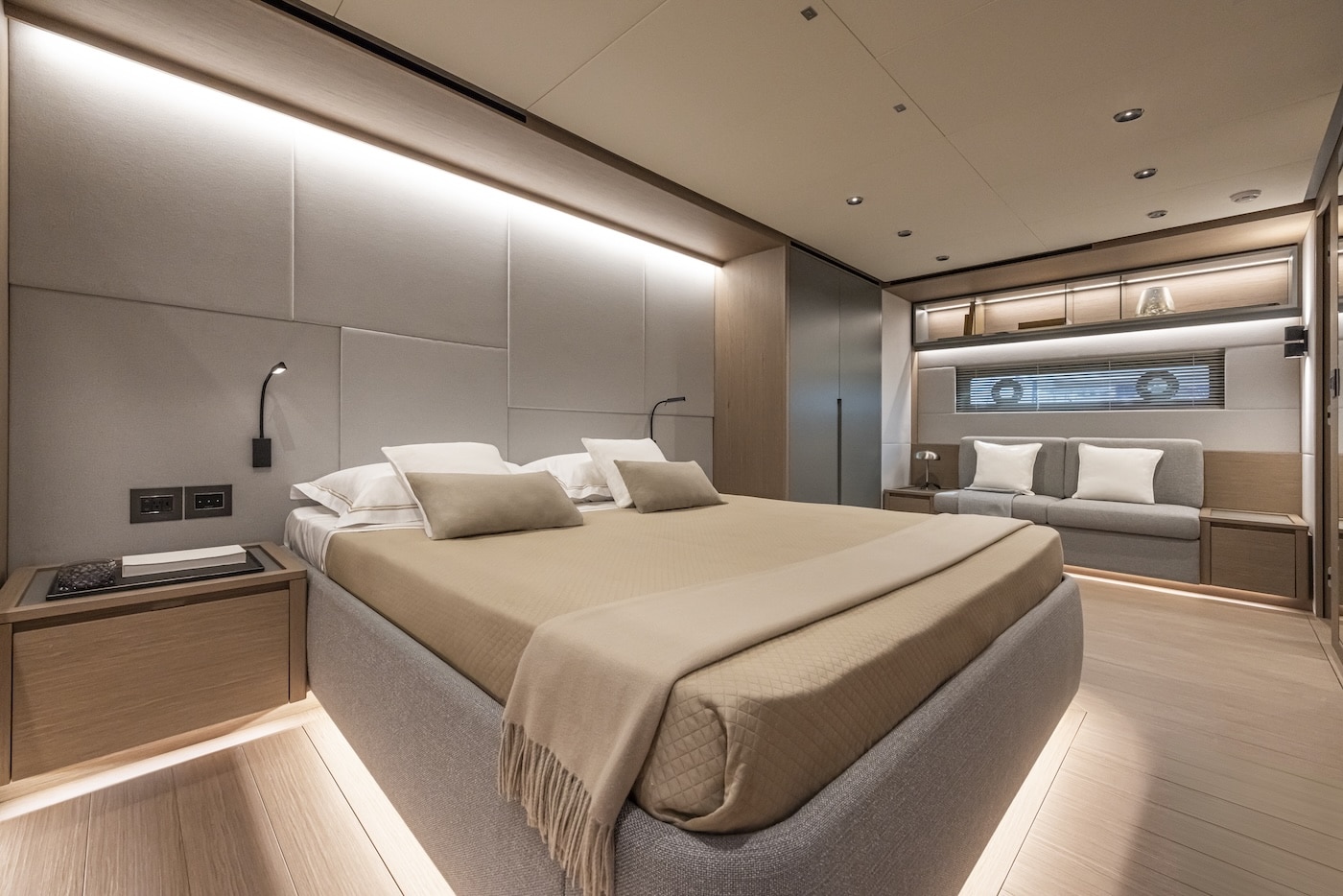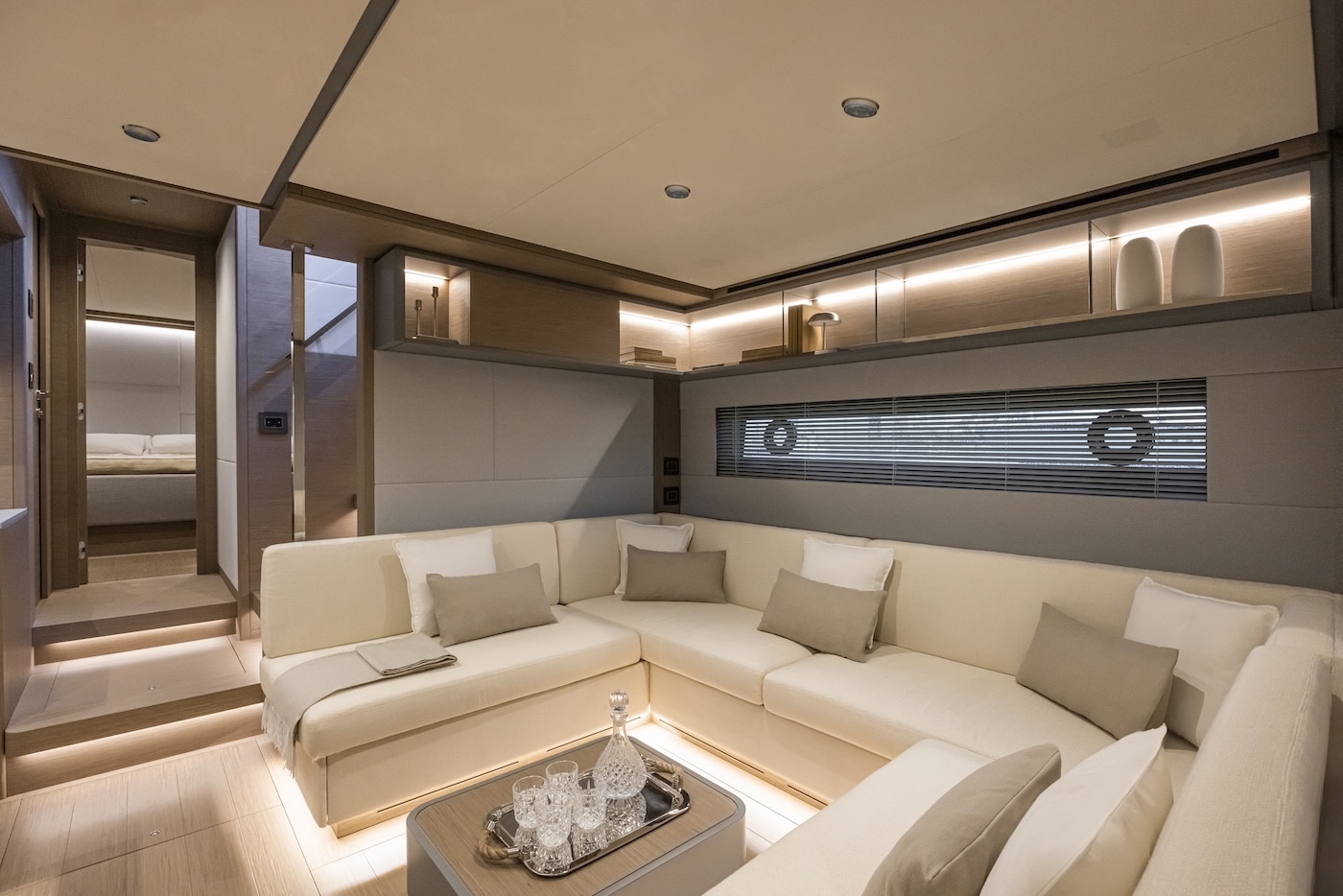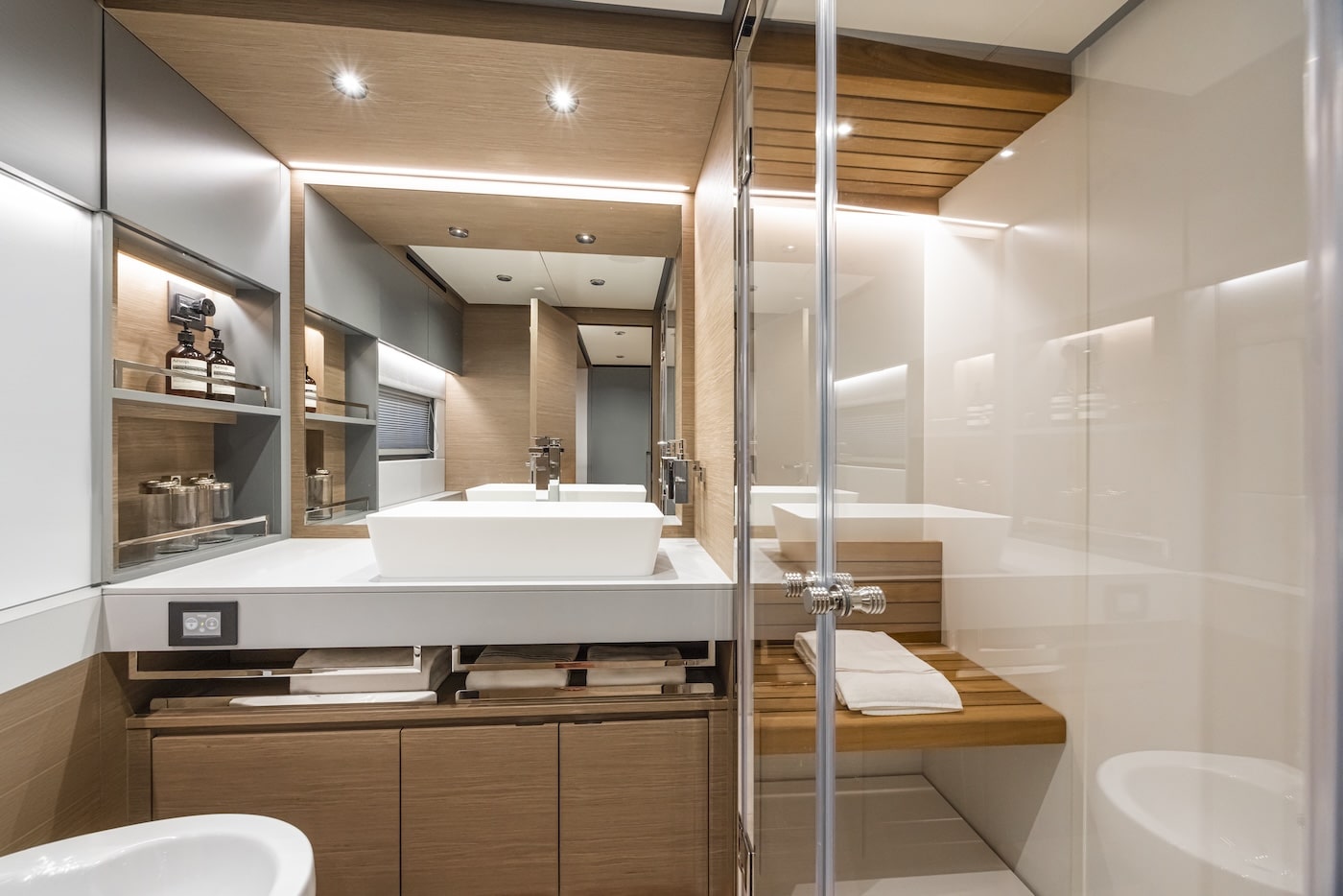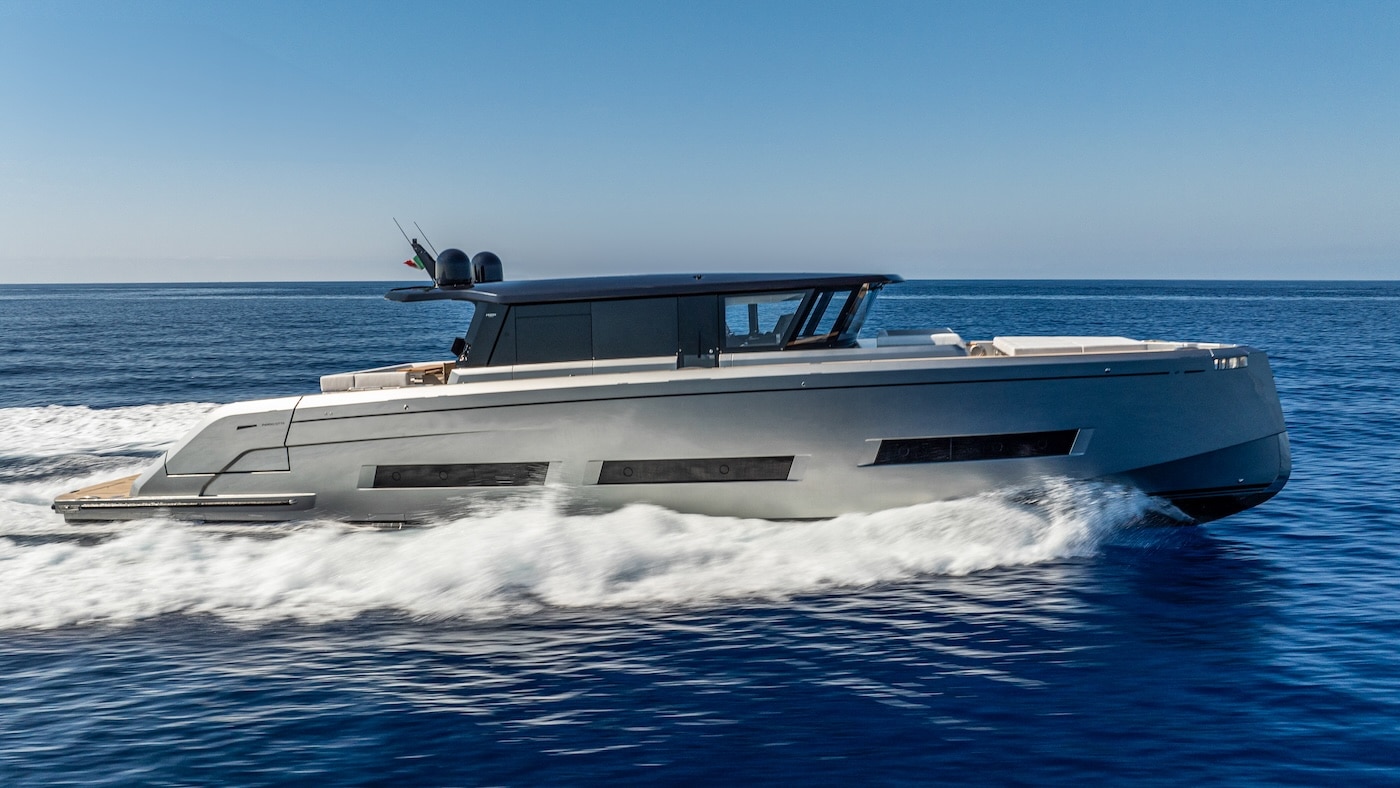It’s hard not to be astonished by the beauty of the new Pardo GT75 which, presented as a world preview at the Cannes Yachting Festival, has succeeded in one fell swoop in redefining the standards of this market segment by presenting the yacht which, in my humble opinion, is not only this year’s most beautiful motorboat, but which, through its solutions, naval engineering and contents, also makes it possible to enjoy the best of both worlds;is not only this year’s most beautiful motor yacht, but also, through its solutions, naval engineering and content, enables Cantiere del Pardo to “leave behind” (and not just barely) the elite of Europe’s best shipyards.
An important statement which, even before analyzing the seaworthiness of this beauty, deserves to be well explained.
Pardo GT75: yacht or superyacht?
What Cantiere del Pardo and Nauta Design have achieved with the new Pardo GT75 is quite unique. In fact, in just 23 meters, this boat magically combines many of the qualities that would normally lead you to buy a superyacht, with its ease of use and consequent operating savings. Let’s take a closer look at these qualities, starting with an aerial view of the main deck.
From this perspective, in fact, we can see how, with great lightness and intelligence, three user-friendly areas have been created, allowing this boat to be lived in by exploiting spaces which, on the one hand, are common in superyachts of 30 metres and over, but which, on the other, are virtually impossible to find on boats of this length.
A top-class beach club
With its open balconies and extended platform, the beach club boasts a simply enormous effective surface area (around 40 square metres), allowing a truly large number of people (there were 14 of us during the test run) to enjoy the space with a pleasure and luxury that only dimensions of this type can offer.
The view from the rear of this area is breathtaking: one has the impression of observing the entrance to a Roman temple, where the symmetry and purity of the Pardo GT75’s lines, combined with the magnificent staircases, frame and enhance the large central solarium.
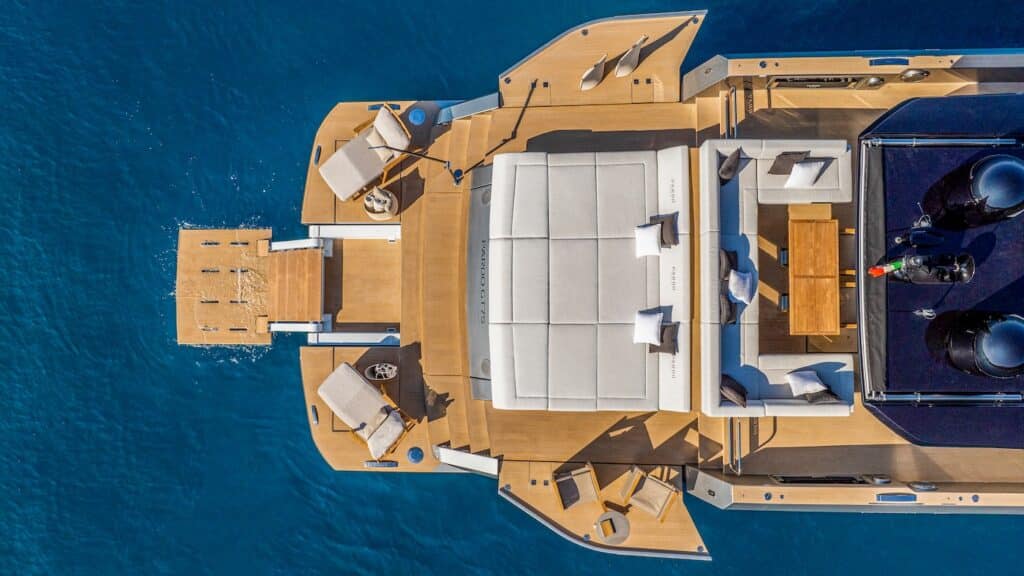
A superyacht tender
The beauty of the aforementioned solarium hides a secret, however. At the touch of a button, in fact, an almost four-metre-long tender is revealed, which can be launched or raised at will. The ability to have a tender of this size, another feature of superyachts, allows owners to disembark dry and quickly, while extending (by a lot) the radius and duration of explorations ashore. An important tender, therefore, but with the enormous advantage of “disappearing” when not needed.
The main deck of the Pardo GT75
Two steps lead up to the area bounded by the Pardo GT75’s exterior dinette, the main deck. Here, the shipyard offers two types of configuration, with the galley above or below, offering the option of installing it here or on the lower deck. These two interesting versions make it possible to personalize this yacht, adapting it to individual needs.
In both cases, what emerges with force is once again the sophistication and great sense of space of this achievement. Sitting on the rear sofa of the outdoor dinette, with the glass doors open, the sense of continuity is truly priceless.
Here, the boundary between outside and inside almost disappears, offering the sensation of being inside a huge terrace overlooking the sea. This is undoubtedly due to the large 360-degree picture windows and the absence of wall units, another stroke of genius by Nauta Design which, in the version with the kitchen below (my favorite), is further amplified and provides contact with the sea and a panorama of incomparable beauty.
At the center of this vision is the Pardo GT75’s interior helm station, which, although equipped with three armchairs, giant screens and exceptional maneuvering visibility, blends into the context with sublime lightness, further exalting this unique overall picture.
By closing the sliding rear doors and the sunroof, the Pardo GT75 becomes the perfect yacht for sailing, whether in less favorable conditions or for winter cruising.
The front dehor
Strolling through the Pardo GT75’s wide gangways, we reach the bow, another area that’it would be reductive to describe as intelligent. We are in the presence of a true dehor, where two opposing sofas, a central table and a huge forward-facing solarium create an elegant, sophisticated space that can be shaded as required with carbon canvas and poles.
It’s an area that succeeds perfectly in combining beauty and functionality, rather as if it were the panoramic terrace of a grand luxury hotel. On the one hand, it’s a place to dine al fresco, away from prying eyes when you’re in port; on the other, it’s certainly the most ventilated place to spend the hottest days, sinking into this delight of sofas and cushions.
The backrest of the forward solarium, which transforms it into a huge chaise longue, also allows you to recline while sailing from an elevated position, offering an incredible visual effect that I’ve never experienced, even on large yachts.
The lower deck of the Pardo GT75
For the lower deck of the Pardo GT75, Nauta Design has also developed a number of interesting versions, all influenced by the choice of top or bottom galley, allowing for two, three or four cabins. This is an important advantage when the owner needs to design a boat to suit his or her needs, another feature usually reserved for larger superyachts, but which entails very different construction costs.
The three- and four-cabin versions, all with private bathrooms, obviously assume that the galley is located on the upper deck. The three-cabin version is perfect for large families, while the four-cabin version is ideal for those wishing to welcome a large number of people on board, or for owners wishing to use the boat for charter activities.
My favorite version, as you’ve probably gathered by now, is the two-cabin version with galley below, although I realize that’s a really luxurious choice. With this configuration, we have the open spaces of a 30/35-meter superyacht, a huge galley with a large central island (ideal for show cooking), opposite an equally large U-shaped sofa with a central table.
But what connects all versions of this magnificent boat are the two magnificent cabins forward and aft, the VIP and Master Cabin respectively. The VIP is truly spacious, with dimensions comparable to those of master cabins on other boats, and is equipped with a king-size bed.
The owner’s cabin is huge, measuring well over 20 square metres on its own. It uses every six meters of width to create a veritable apartment where the owner has a huge bathroom with a double shower, three meters of woodwork/desk, a large sofa and floor space galore. The rear wall houses the king-size bed, accompanied by bedside tables and a tall double-door wardrobe that would make any domestic cupboard green with envy.
The Pardo GT75 sea trial
When I wrote that the new Pardo GT75 could be considered the best boat of the year, I was referring only in part to the design and functional solutions described so far. Indeed, a good half of this assessment, which I didn’t give lightly, relates to what I was able to experience during half a day’s sailing.
Indeed, this boat represents the highest evolutionary stage of hulls of this size, hulls specially designed for IPS, which manage to exploit their full potential at both low and high speeds, thanks to the incredible ease of manoeuvring that this technology makes possible.
A perfect example of this is the triple Volvo D13 IPS 1350 engine we found on the Pardo GT75 we tested, which, despite a full load and a hull in less than optimal conditions, enabled us to easily reach the impressive speed of 34.2 knots, which the captain tells us can even reach 37 knots when the hull and propellers are not covered with vegetation as is the case today.
At the helm, the boat is pleasantly responsive; as it accelerates, it begins to glide with almost no change in trim and no lifting of the bow. Pushing the joysticks, you’re surprised both by the sensation of power, unusual for boats of this size, and by her ability to make even tight turns, with angles of heel that bring more than a smile to those present.
The Pardo GT75 is a pleasantly lively boat, yet one that never forgets its intended purpose, always offering a level of safety and sailing comfort to match, where you’ll sail smoothly over the waves, with very low noise emissions.
Sailing at 20 knots, an economical cruising speed, the Pardo GT75 shows that it can also be very fuel-efficient, and despite weighing in at 55/56 tonnes, it cruises peacefully at just over 11 liters per mile, an extraordinary performance when you consider that we’re on board a 23-metre boat!
As we slow down, however, we discover another particularly interesting quality of this yacht that makes it so unique: its propensity to sail on the move. At 12 knots, the Pardo GT75 offers a sailing experience very similar to that of the big boats. superyachtswhere emissions and fuel consumption are kept to a minimum, and the quality of life on board is maximized. In these conditions, it’s easy to imagine magnificent moonlit night crossings or long exotic navigations, facilitated by the 700 miles of range at this speed.
Test data
|
rpm |
Speed |
Consumption in l/h |
Consumption in l/nm |
Operating range |
|
600 |
6,9 |
16 |
2,3 |
1854,4 |
|
750 |
8,4 |
31 |
3,7 |
1165,2 |
|
1000 |
11 |
66 |
6,0 |
716,7 |
|
1075 |
12 |
73 |
6,1 |
706,8 |
|
1250 |
13,3 |
121 |
9,1 |
472,6 |
|
1500 |
16,7 |
199 |
11,9 |
360,9 |
|
1610 |
20 |
228 |
11,4 |
377,2 |
|
1750 |
21,8 |
283 |
13,0 |
331,2 |
|
2000 |
26,1 |
395 |
15,1 |
284,1 |
|
2250 |
32,4 |
502 |
15,5 |
277,5 |
|
2400 |
34,1 |
573 |
16,8 |
255,9 |
Test conditions: light sea, light wind, fuel tanks 100%, water tank 83%, waste water 35%, hull and propellers dirty, 14 people on board.
Technical specifications
|
Overall length |
22,85 m |
|
Hull length |
22,81 m |
|
Maximum width |
5,99 m |
|
Draft |
1,65 m |
|
Displacement |
48,3 t |
|
Fuel capacity |
4.300 l |
|
Fresh water capacity |
1.100 l |
|
Standard engines |
3 x D13 IPS 1050 |
|
Optional motors |
3 x D13 IPS 1350 |
|
Guests |
B20/C24 |
|
Design and Construction |
Cantiere del Pardo |
|
Interior and exterior design |
Nauta Design |
|
Naval Architecture |
Zuccheri Yacht Design |
Source link



